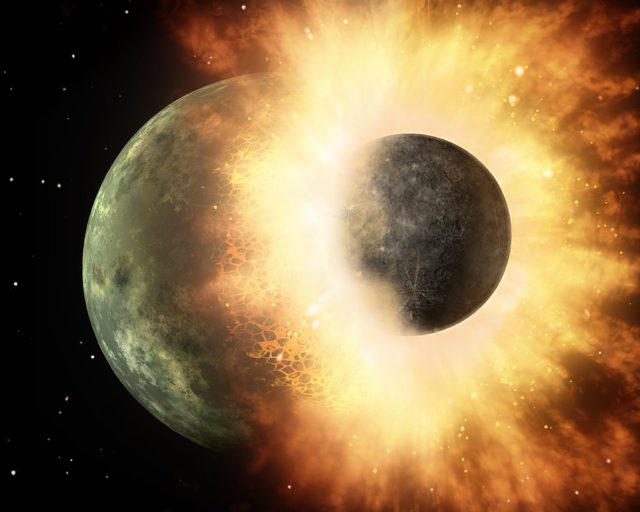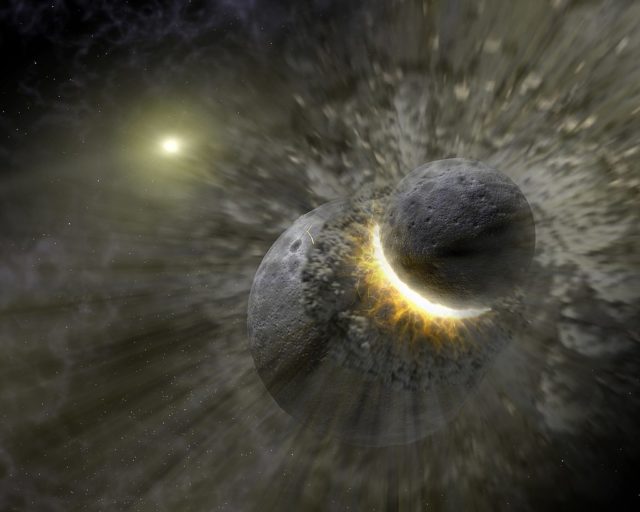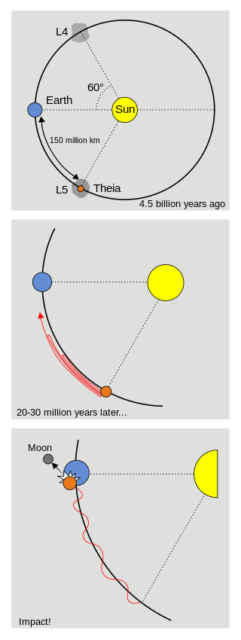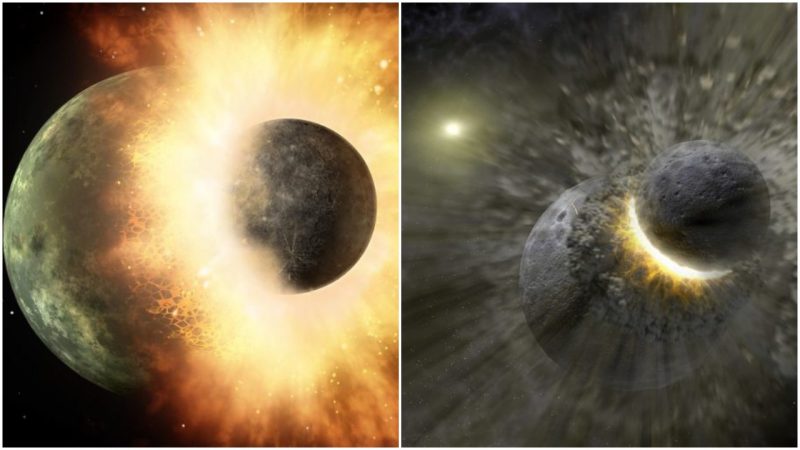What exactly is Theia? Some 4.6 billion years ago, the solar system was completely different. It was chaotic and volatile. Many of the planets that we know today were still forming via the process known as “accretion,” which involved the accumulation of smaller particles of matter into one bigger object with its own gravity.
Earth, or “Gaia,” as scientists call the early Earth, was one of those young planetary bodies circling the sun and gaining mass over time, constantly being bombarded by asteroids. This is a time that will always remain unknown to us. A magical world, a dreamlike world with a different set of rules and laws, one in which we (humankind) weren’t even on the horizon.
It was during this archaic period that the Earth came into contact with another planet-sized object thought to be something like the size of Mars. This hypothetical object is known as Theia in scientific circles, named after the “Titaness” from Greek Mythology. Theia was the mother of the Sun (Helios) and Moon (Selene).

It is estimated that Theia was probably orbiting somewhere in the area of the L4 or L5 Earth-Sun Lagrangian points. At some point, Theia’s orbit shifted due to the gravitational interference of another big object in its vicinity. It is possible that this object was, in fact, Venus, because of the relative closeness of the orbits of these two bodies back then. We don’t know what Theia looked like, but Venus, the goddess of beauty, probably was against the idea of someone more beautiful than her being around. She kicked it out of its orbit and in doing so moved it closer to Gaia, to our own piece of rock within the vast universe. Theia got close to the point of impact.

For a long time, Theia was orbiting the sun in a stable L4 or L5 orbit, close to Earth. The two planets never hurt or interfered with each other until Venus pushed Theia closer to Gaia and caused a degree of gravitational instability. Earlier scientists believed that Theia and Earth just glanced each other, although even a glance between Titans is a big deal. According to this hypothesis, a collision resulted, with material from both Gaia and Theia being ejected in the vicinity. These pieces later formed the Moon, or perhaps two moons that later fused into the Moon as we know it today.

Last year, new research, led by the UCLA Department of Earth, Planetary, and Space Sciences, concluded that this impact was, in fact, more serious, and was a direct collision. The researchers backed up their hypothesis with a detailed computer simulation. The team also analyzed geological material from both the Earth and the Moon and discovered that they both contain remains from Theia.
We still don’t know the exact scenario, and there are many hypotheses about the life of Theia, but in any case, the story ends up with Theia being devoured in the collision with the young Earth. We don’t know a lot about this mysterious planet, but Earth carries it in her heart. Indirectly, we all have a piece of Theia in ourselves, the planet that gave its own life for us to exist. In a way, this planetary collision sounds poetic, epically poetic.

The scientific story of the formation of our planet sounds like a myth. Science is kind of a story. Science and storytelling have a lot in common, except perhaps the equations which, on the other hand, could be argued to have a lot in common with poetry. The story called science is often close to the myths and legends from the past.
This shouldn’t be a big surprise, because, in ancient times, people explained that which they didn’t understand with the help of their imagination, and is there a better way to explain something than a good story? Science is a great story, but one that is supported by scientific fact.
